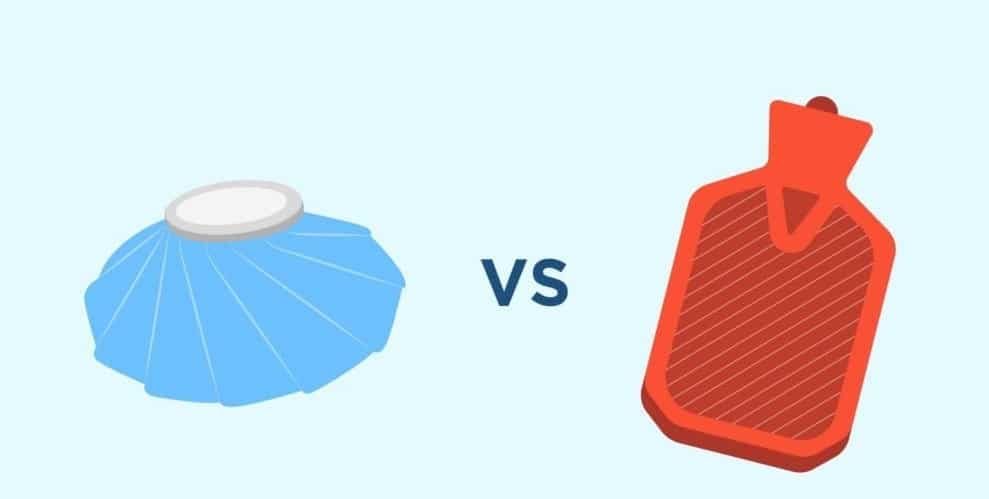Your Guide to Using Heat or Ice for Pain
Using ice or heat to ease pain is simple and inexpensive, but can be confusing. Here’s a guide to help make things easier.
The Benefits
In general, ice therapy (also known as cryotherapy) can help with acute, superficial injuries. Theoretically, it limits inflammation and numbs nerve endings. Heat is usually good for most kinds of pain other than acute injuries. Heat works by relieving stress in the body. It provides relaxation, comfort and reassurance to the nervous system which in turn brings the pain level down.
The Risks
Both heat and ice can be unhelpful if unwanted: if you are a person who doesn’t like being cold, or if you are already cold, and you apply ice to an injury, the body might see it as a threat and increase the pain. The same can happen if you don’t enjoy being hot or you are already overheated and then add heat. Applying heat to an acute injury will make it worse by bringing more blood flow to the area which will increase the inflammation. Ice used for chronic pain can make the muscles tighten up even more, increasing discomfort.
If you have any of the following pre-existing conditions, you should consult with your doctor before using heat therapy, since there is an increased risk of complications: diabetes, multiple sclerosis (MS), deep vein thrombosis (DVT), dermatitis, and any other vascular diseases. For cryotherapy, consult with your doctor first if you have diabetes, cardiovascular or heart conditions, poor circulation, or any sensory disorders that can prevent you from feeling.
How To Use Ice
The typical ways you can apply ice at home include ice packs or frozen gel packs. When applying ice, a rule of thumb is to never just put ice or an ice pack directly on the skin. Wrap it in a towel first. There is a way to use raw ice (ice directly on the skin), but it comes with the risk of ice burn if you are not careful. For more information on this, please check out Painscience.com for a great article. You can normally ice an area for 10 minutes, or you can let your body tell you when it has had enough by following the CBAN method. CBAN stands for: Cold, Burning, Aching, Numbness. The area being treated will go through these different sensations as it gets iced. When it feels numb, you can remove the ice. Icing can happen several times a day.
How To Use Heat
Some common methods to apply heat include electric heating pads, microwaveable heat packs, hot water bottles, a warm bath or even a shower. As for using heat for pain management, 15-20 minutes can be effective.
Quick Guide
HEAT IS FOR: non-inflammatory chronic pain and stress, and is usually for muscle soreness from: over-exertion, DOMS, cramps and spasms (menstrual, neuropathic, restless leg, postural stress, trigger points (AKA knots). It can help with pain brought on by the following: fibromyalgia pain, rheumatic disease, sleep deprivation, drug induced muscle soreness (from cholesterol lowering drugs like statins, and drugs for osteoporosis such as bisphosphonates), vitamin D deficiency.
HEAT IS NOT FOR: cramps due to heat exhaustion or exercise induced cramps, infections, fresh injuries, flare-ups of arthritis, or any other condition where inflammation is present.
ICE IS FOR: sprains, strains, bruises, tendinitis, superficial tissues inflamed by recent trauma, chronic overuse or tissue fatigue injuries like: IT band syndrome, carpal tunnel, patella femoral, shin splints, plantar fasciitis, arthritis, some arthritides like rheumatoid, ankylosing spondylitis
ICE IS NOT FOR: muscle pain
Did You Know?
Often icing neck and lower back pain is not a good idea because even though these areas feel like they are inflamed and injured, the pain could actually be coming from muscles that have trigger points, which don’t usually respond well to ice. In fact, ice is usually not good for muscles because they usually tighten up in response.
Muscle pain is not usually due to injury even though it can be very painful. Muscles are usually only injured with trauma or intense exertion. Sometimes a popping sound can be heard at the time of injury. In these cases ice would be good for as long as inflammation is present and then switch to heat.
Signs of inflammation include: tissue that is sensitive to touch and that is hot, red, and swelling.
A Final Word on Using Heat or Ice
If you’ve got pain and you don’t have this blog post handy, feel free to try ice or heat. Your body will let you know what’s right. If one doesn’t feel good, try the other!
References
https://www.painscience.com/articles/ice-heat-confusion.php
https://www.healthline.com/health/chronic-pain/treating-pain-with-heat-and-cold#cold-therapy

